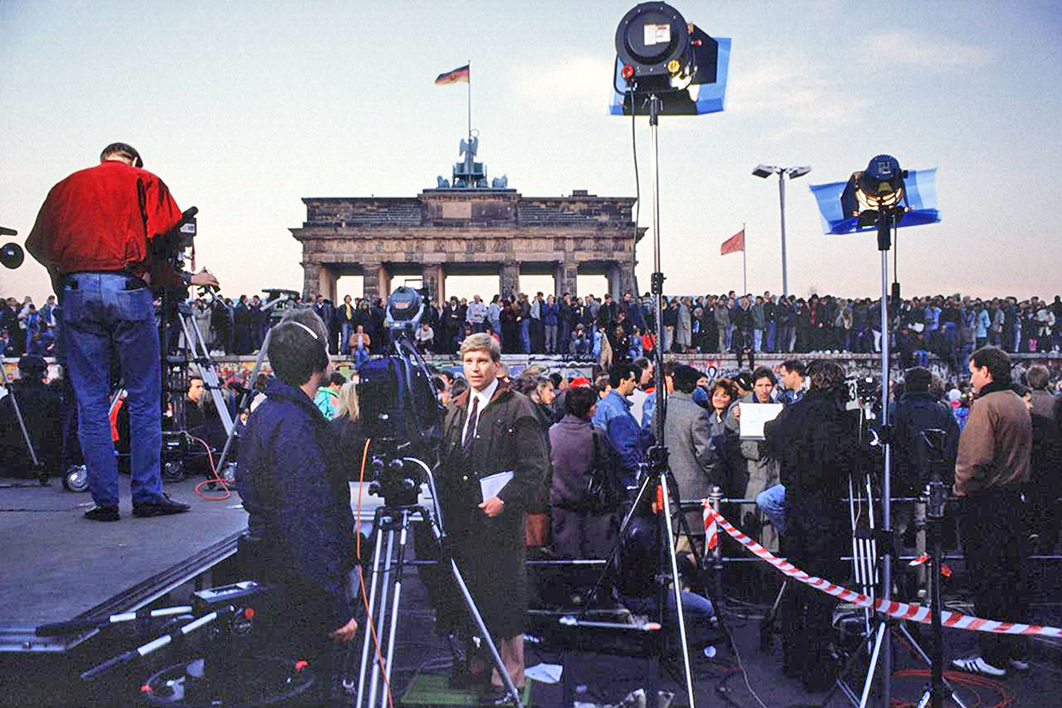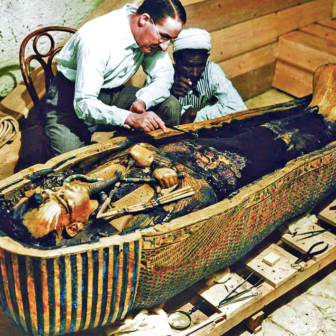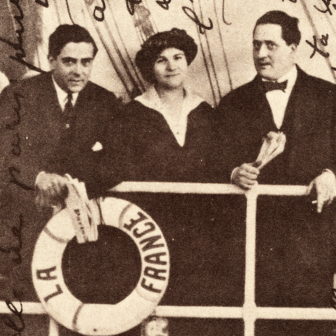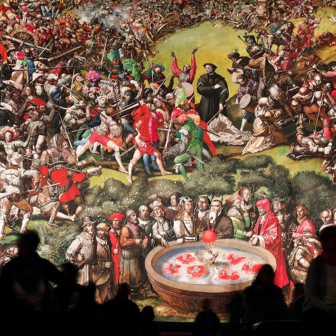“In the blizzard of news and events, it’s hard to make sense of how we arrived here. But if we stand back, we can see how things connect.” These words, introducing each episode of the ABC’s six-part documentary Road to Now, accompany footage of the Berlin Wall being torn down, the World Trade Center imploding, and the devastation wrought by the Asian tsunami and wars in the Middle East.
Behind the series is an impressive team of creators and commentators, including executive producer Alan Erson, former head of ABC Factual, and director Nik Wansbrough, who has made a range of documentaries that push the boundaries of presentation and special effects. Greg Wilesmith, with his distinguished track record as a foreign correspondent, shares the writing credits with journalist and filmmaker Simon Nasht.
It’s an ambitious venture, based on the premise that the world has changed at unprecedented speed and scale over the past three decades. Unprecedented? Tell that to Vasily Grossman, who lived through the Russian revolution, the siege of Stalingrad and the darkest phase of Soviet terror. Tell anyone who lived through the two world wars, with all the consequent geopolitical, industrial and technological transformations.
Perhaps what is unprecedented is how events are recorded and relayed across the world in an around-the-clock feedback loop of ever more sensational “breaking news.” Yes, this is a crisis-ridden era, but we have become addicted to crises.
This means that a retrospective account of the biggest crises of our time might be an opportunity not just to gain some perspective on the events themselves but also to explore how they have been imprinted on public consciousness. Is this series offering that kind of critical distance?
The narrative arc of Road to Now begins with the fall of the Berlin Wall in 1989, which is revisited at the start of each episode. “It was pandemonium, but it was good pandemonium,” says former foreign correspondent Peter Cave, who was there. There was “a huge sense of history,” adds former foreign minister Gareth Evans, “a sense that the tectonic plates really had shifted and the world was a different place.”
As one oppressed country after another broke free, the Soviet Union disintegrated. But, as British historian Niall Ferguson reflects, the complacency in Washington about the apparent triumph of Western democracy and capitalism was soon shaken. When the tectonic shifts broke up Yugoslavia, the result was civil war and then genocide. The Blair government in London joined with Washington to force NATO’s hand on military intervention and discovered a taste for “hard power” that would lead to dire consequences in Iraq. The most important lesson to be learned, in Ferguson’s view, is that things fall apart.
So do thematic and narrative lines. In some respects, this series is a response to the loss of narrative cohesion in public consciousness. In a movie or a novel, the fall of the Berlin Wall would either be the buoyant ending or the beginning of an arc that moves through trouble and trauma to a state of renewed hope. That’s not what has happened, and it’s not where we are. Traditions of storytelling could make sense of a Trump presidency followed by the election of Obama, but how do we deal with it backwards?
The first episode of Road to Now seems to pose exactly that question. CNN anchor Christiane Amanpour strikes a sombre note, speculating that history moves in circles. “I hope there’s incremental progress,” she says. But with the 9/11 attacks on America, and the ongoing mayhem caused by the US response, it’s hard to sustain such a hope.
When Shakespeare’s Othello declares, “Chaos is come again,” the disasters that follow are more a consequence of how he sees things than of any objective state of affairs. He’s too ready to listen to perniciously distorted reports from his counsellor Iago, who steers events in the opposite direction from reason, responsibility and justice. It’s not hard to see an analogy here with manipulative agents in the twenty-first-century media who trade in wilful distortion.
Curiously, the media is not a key focus in any of the episodes, which are organised on the themes of conflict, leadership, freedom, dictatorship, global communications and natural disaster. (They left out pandemics, too.) As the current rolling cycle of breaking news presents what former Democratic presidential contender Andrew Yang calls “a crisis on top of a crisis on top of a crisis,” we are in a new order of immediacy. One of the problems for this documentary is that last month, last week and even yesterday are no longer “now.”
That wouldn’t be so much of a problem if the series had more structural and thematic clarity. Because the episode themes overlap, the same events are revisited several times, often without any deepening of perspective. Presenter Chris Bath is not at her best with this kind of material, and her rather leaden delivery only highlights the problems of an undercooked script. We really do need some verve and command in the voice, and Amanpour’s appearance as an interview subject only serves to remind us of what is missing.
The compensating factor is a suite of interviews with people with valuable insights and perspectives. Stan Grant speaks from his extensive experience as a foreign correspondent who has had to cut through the political spin as conflicts and crises were unfolding. Niall Ferguson has a genuine flair for metanarrative — perhaps you need to be a historian to have a cogent grasp of the present as a manifestation of evolving factors — and few people in Australia are better placed to comment on strategic and defence policy than the ANU’s Hugh White.
Perhaps the series would have worked better if, rather than chopping up the interviews and interspersing them with the archive footage, these authoritative voices had served to carry the whole narrative. Or perhaps the quest for perspective and authority is itself misguided.
A sense of “how things connect” may be a futile expectation. We are used to thinking that hindsight has some special value, and that the “judgement of history” will be greater and wiser. But there are times in history when the road to now is so rocky and haphazard that attempts at coherent understanding will be shaken apart at the next swerve in the road. How do we prepare for that? •




